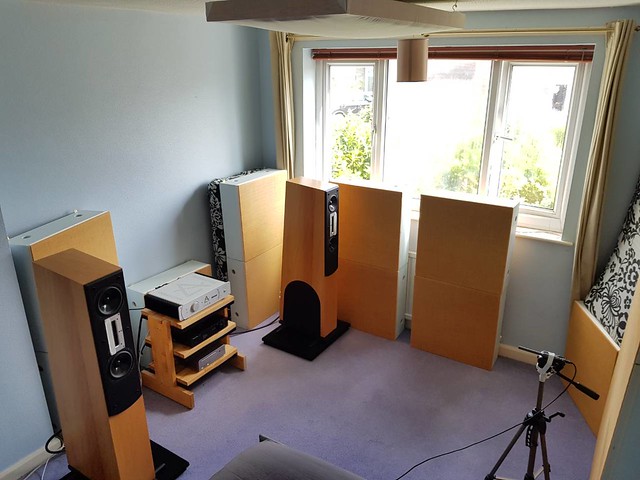nopiano said:
It’s very interesting what you’re attempting, insider, but I’m not sure that you can necessarily attribute these slight changes to an amplifier having better control. You could just as easily look at damping factor/output impedance, but what you measure isn’t what you hear.
Maybe I’ve misread you, but these graphs are single sweeps aren’t they, not averages or multi point measurements? I’m assuming the speakers and mike are in unchanged positions throughout? What does it look like if moved forward or back a few cm? And are the measurements identical every day?
I think the reason speakers are tested anechoically is well established, but it can be replicated outdoors on a windless day, allegedly! Room averaged responses are used by Martin Colloms, whose book on High Performance Speakers I’ve recommended here before. It’s about £80 new but you can get an ex library copy for about twenty.
I’ll see if I can find something relevant to link here.
Thanks for book recommendation and links in your other reply. I'll be happy to give it a go once I'm finished reading "Master Handbook of Acoustics".
I hope I can clarify my thinking behind this for you a bit, Nopiano. I hope this doesn't come across the wrong way as it is a long post. I'm only trying to explain.
First of, it is the same point in space and results are repeatable as many times I would like, any time I want to do it. I'm using a tripod and have floor markings. Speakers are in the same position, with changes kept to minimum, biggest one being the amplifier. Point in space is accurate and I double check with a measuring tape for precision (distances to walls and floor and tweeters). How can I be sure you may ask? Hegel measurements were taken a week or so ago as not had it since Friday, I left it with a mate of mine in exchage for his DAC. Measurements for Leema were taken on the day posted. Yet there's hardly any difference between mids and highs. Should there be movement of mic position the differences would be significant. Here's a pic I took taking measurments.

Why not take an average of many measurements? If we're talking sinlge point and the result is repeatable than the average would be the same as a single measurement. Unless the measuring equipment is poor or there are other variables (which I do my best to eliminate). Why single point? It's around the listening position and I design DSP filters around these measurements.
Why not take multi-point measurements? A couple of reason... First, I don't have any need. It's a single purpose setup for one listener. Secondly, multipoint measurements are used to look at dispersion. I know due to desing of my speakers they have a wide horizontal dispersion and poor vertical dispersion. But dispersion shouldn't change with a different amp. And as I'm trying to see how speaker responds to the amp. Or in fact if they respond in any way differently at all. Not really trying to measure the speakers but amp/speaker interaction compare to another amp/speaker interaction. I don't have an oscilloscope to measure amplifiers but even if I did I'd still be interested to know how it affects what I hear. And what I hear can be measured acoustically. Also doing multi-point measurements in room would be unworkable (unless I had floor marking for every position permanently).
Why not measure outside? I would but at 42kg a speaker from first floor listening room is just not doable. Particularly as I measure everything I come in contact with (this includes USB cables, isolation, etc.). Just a hobby in a hobby.
So when you say "I’m not sure that you can necessarily attribute these slight changes to an amplifier having better control."
First of all looking at 1/6th octave smoothing change of 3dB-5dB is massive. Nothing slight about it. Increase treble by 3dB worse 5dB on your setup and it will be very bright. But fair enough what else can I attribute them to? Same room, same speakers in the same position, same room treatment in same positions, same postion of the mic, same cables, similar temperature and humidity. The main variable is the amp. How it interacts with the speakers and how speakers interact with the room. If my conclusions are wrong I'm more than happy to hold my hands up but what else do you think it could be? Now is it like you say the damping factor? Hegel claims damping of over 2000 on the Rost. But whatever it is can be attributed to amp as this is the bigest variable in this.
Hope that makes sense even if you don't agree with the premise
🙂

